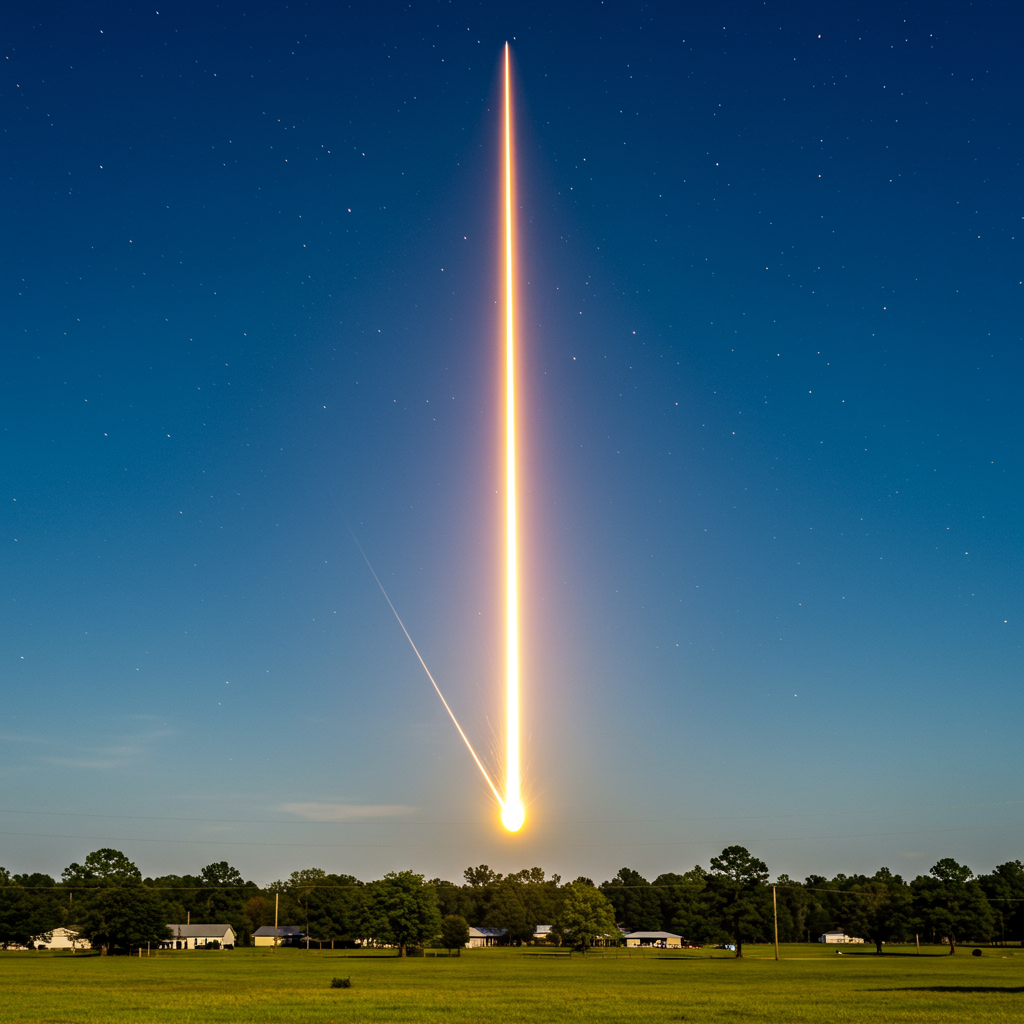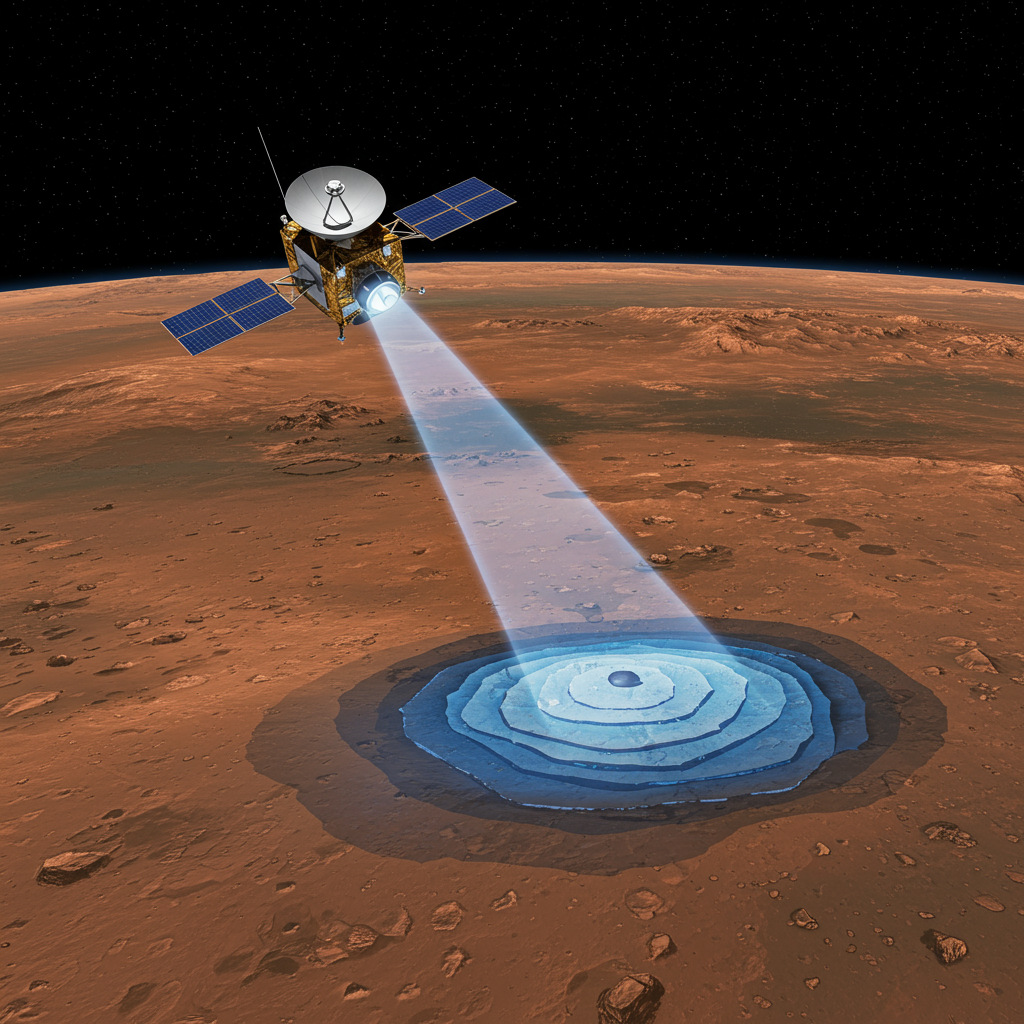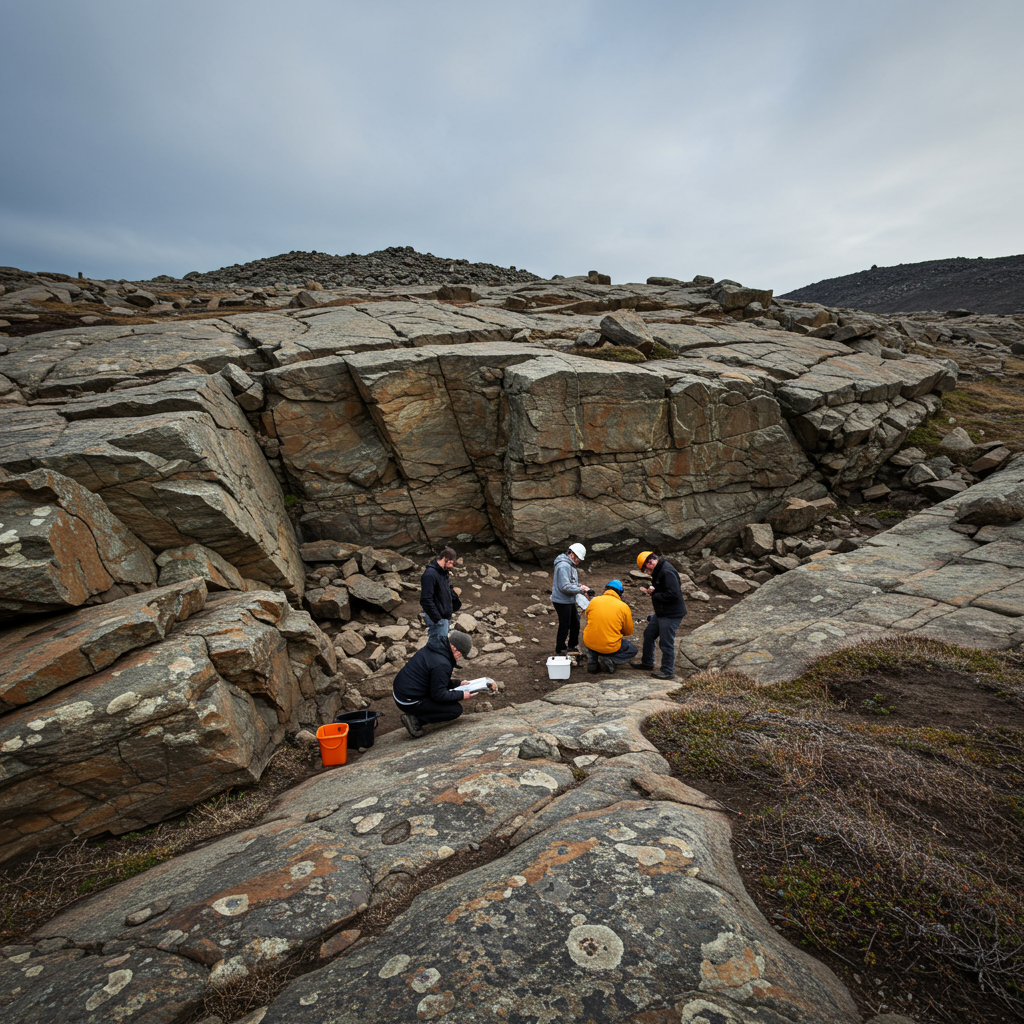A stunning celestial event captured attention across the southeastern United States recently, as a brilliant fireball streaked across the daytime sky. Reports flooded in from multiple states, describing an incredibly bright flash followed by loud booms. NASA quickly confirmed the phenomenon was a meteor entering Earth’s atmosphere, specifically a large fragment often referred to as a bolide. This rare daytime fireball sighting has generated significant interest, not only for its visual spectacle but also due to the potential for meteorites to have landed on the ground, including a report of an object crashing into a Georgia home.
NASA Confirms and Tracks the Dramatic Entry
The National Aeronautics and Space Administration (NASA) was swift to analyze the event, leveraging data from various sources. According to Bill Cooke, who leads NASA’s Meteoroid Environment Office, the object was first detected high above Oxford, Georgia. Its atmospheric entry occurred around 12:25 p.m. EDT.
The Meteor’s Swift Descent
Traveling at an incredible estimated speed of 30,000 miles per hour, the meteor followed a southwest trajectory. It began its fiery journey high in the atmosphere, approximately 48 miles above Oxford, Georgia. The immense friction with Earth’s atmosphere caused it to heat up intensely, creating the bright streak known as a meteor.
Disintegration and Energy Release
The object didn’t make it to the ground intact. NASA analysis indicates it disintegrated at an altitude of about 27 miles above the small community of West Forest, Georgia. This breakup was not quiet; it released a tremendous amount of energy. The estimated energy release was equivalent to approximately 20 tons of TNT. This powerful burst of energy created a significant pressure wave.
The Mystery Booms and Shaking Explained
Following the visual spectacle, residents across a wide area reported hearing loud booms and feeling their homes shake. Initial reactions sometimes likened the sensation to an earthquake. However, authorities, including the U.S. Geological Survey (USGS) and the National Weather Service (NWS), quickly clarified the cause.
A Powerful Sonic Boom
The shaking and loud sounds were not seismic activity. Instead, they were the direct result of a powerful sonic boom. This occurs when an object travels through the atmosphere faster than the speed of sound. The meteor’s extreme speed generated a shockwave that propagated to the ground, producing the “booms” and causing structures to vibrate. The NWS office in Peachtree City confirmed this sonic boom explanation.
Understanding the Object from Space
NASA’s analysis provided crucial details about the nature of the incoming object. They described it as an asteroidal fragment. These are pieces that have broken off from asteroids, which are rocky bodies orbiting the sun, mostly found in the asteroid belt between Mars and Jupiter.
Size and Scale
The fragment that entered the atmosphere was estimated to be substantial for its kind. NASA initially estimated its size at roughly three feet in diameter. It was also quite heavy, weighing in at over a ton. Another description from NASA’s Bill Cooke characterized the object as being about the size of a shopping cart. While slight variations in description exist, both indicate a significantly sized object for atmospheric entry. Objects of this size and class are relatively rare. Astrophysicist Alissa Bans noted that events of this “fireball class” occur only a handful of times annually. Most space debris burns up completely, but this object was large enough that it did not.
How Scientists Tracked the Fireball
Tracking such a fast-moving, high-altitude event presents challenges for standard weather observation tools. Conventional weather radar and satellite images often have updates that are too infrequent or are not designed for objects moving at these speeds and altitudes.
Satellite Detection and Radar Signatures
However, specialized instruments proved effective. NASA analyzed eyewitness accounts, camera footage (including dashcam and doorbell videos), and crucial satellite data. The Geostationary Lightning Mappers (GLM) on NOAA’s GOES satellites played a key role. These instruments are designed to detect flashes high in the sky, primarily lightning. The brilliant flash of the meteor mimicking a lightning event allowed the GLM network to detect and track it, providing valuable data on its location and energy release. Furthermore, Doppler weather radar systems in the area detected signatures consistent with falling debris from the disintegrating object.
Widespread Sightings and Witness Reactions
The event was anything but localized. Reports poured in from numerous states across the Southeast. The American Meteor Society (AMS), a non-profit scientific organization that collects meteor sighting reports, received over 100 reports almost immediately, eventually totaling over 200 reports. Sightings were confirmed in Georgia, South Carolina, Tennessee, and potentially North Carolina and Virginia.
A Rare Daytime Spectacle
Witnesses described seeing a bright flash of white light or a fiery streak across the clear blue sky. What made this sighting particularly noteworthy was its visibility in broad daylight. Meteors enter the atmosphere constantly, but it is rare for one to be bright enough to be easily seen during the daytime. Eyewitnesses emphasized the intensity, describing the object as being “so bright in the middle of the day… brighter than the sun.” This immense brightness is characteristic of a bolide. The sheer spectacle left many observers in awe, with reports expressing amazement and stating they had “never seen anything like it before.” Video footage widely shared on social media visually documented the fiery streak.
Reports of Potential Meteorite Impacts
One of the most significant aspects of this event is the potential for fragments of the meteor, now called meteorites, to have survived atmospheric entry and reached the ground. While most objects burn up completely, the size of this bolide suggested some pieces might survive.
Incident in Henry County, Georgia
A specific incident in Henry County, Georgia, garnered significant attention. Emergency officials there investigated a report from a resident in McDonough who claimed an object had crashed through their roof. The Henry County Emergency Management Agency confirmed the report, noting “unusual damage” to the home. The damage included an object penetrating the roof and ceiling, creating a hole described as golf-ball sized, and even cracking the laminate flooring inside the home. While not definitively confirmed as a meteorite at the time of reporting, officials linked it as potentially being from the meteor event given the timing. No injuries were reported at the struck home or elsewhere in connection with the fireball.
Searching for Fragments
The potential for meteorite falls extends beyond the single reported impact. Doppler radar data analyzed by NASA suggested a potential area of debris fall near Blacksville, Georgia. In addition, fire officials in Anderson County, South Carolina, also reported actively searching for a potential meteorite crash site in their area based on local reports. Mike Hankey of the AMS noted that a daytime fireball causing a sonic boom often indicates a meteorite drop, although it’s not guaranteed. The search for these rare pieces of space rock is an ongoing effort involving scientists and potentially local residents.
Scientific Perspectives on the Event
Experts have weighed in on the significance and characteristics of this particular fireball. Astrophysicist Alissa Bans characterized the event as a bolide, likely originating from an asteroid fragment. She highlighted that while events like this are not unheard of, they are infrequent, occurring just a few times per year in this class.
Why This One Was Different
Bans also noted that the object’s survival implies its substantial initial size. Most small space objects burn up completely and never reach the surface. The fact that potential fragments may have survived and possibly struck the ground underscores that this was a larger than average atmospheric entry event. Bill Cooke of NASA’s office reinforced the likelihood of meteorites being on the ground, particularly near Blacksville, Georgia.
Distinguishing Space Objects
It’s helpful to clarify the terms used when discussing such events. A meteoroid is the initial rocky or metallic object traveling through space. When a meteoroid enters Earth’s atmosphere and burns up, the streak of light we see is called a meteor (or a “shooting star”). A particularly bright meteor, often one that explodes or fragments, is termed a bolide. If a part of the meteor survives its fiery passage and lands on Earth’s surface, it is called a meteorite. This event involved a large meteoroid becoming a spectacular bolide, potentially resulting in meteorite finds.
What Comes Next? The Hunt for Meteorites
The primary next step following an event like this is the search for meteorites. Scientists are interested in recovering fragments to study their composition and learn more about the object’s origin. Locals in the predicted fall areas, such as near Blacksville, Georgia, may also be on the lookout for these rare extraterrestrial rocks. The investigation into the incident in Henry County, Georgia, continues to determine if the object that struck the home is indeed a meteorite from this event. Recovered fragments could provide definitive proof and allow for detailed analysis of the meteor’s parent body. The Federal Aviation Administration (FAA) confirmed no unusual aircraft activity occurred during the event, ruling out aviation-related causes.
Frequently Asked Questions
What was the bright fireball seen across the Southeast?
The bright flash seen across states like Georgia, South Carolina, and Tennessee was a large meteor, also known as a bolide, entering Earth’s atmosphere. NASA confirmed it was an asteroidal fragment, estimated to be about three feet in diameter and weighing over a ton. It traveled at around 30,000 mph before disintegrating high above West Forest, Georgia. This type of daytime sighting is relatively rare due to the object’s exceptional brightness.
Why did the meteor event cause loud booms and shaking?
The loud booms and reported shaking that many people experienced were caused by a powerful sonic boom. When the meteor traveled through the atmosphere at extremely high speeds (much faster than sound), it created a shockwave. This pressure wave traveled to the ground, resulting in the audible booms and causing vibrations that some initially mistook for seismic activity or an earthquake.
Did a piece of the meteor hit a house in Georgia?
Emergency officials in Henry County, Georgia, are investigating an incident where a resident reported an object crashing through their roof and ceiling in McDonough around the time of the meteor event. The damage is described as unusual, including a hole and cracked flooring. While not definitively confirmed as a meteorite yet, officials are linking it as potentially being from the meteor. No injuries were reported in connection with this incident.
Conclusion: A Glimpse of Space
The daytime fireball event provided a spectacular and rare reminder that our planet is constantly interacting with space. A large asteroidal fragment became a brilliant bolide, captivating observers across several states. While the main object disintegrated high above Georgia, the powerful sonic boom and potential for meteorite falls underscore the scale of the event. Investigations into possible ground impacts, like the one reported at the Henry County home, and the search for meteorite fragments continue. These efforts will help scientists better understand this specific object and the risks posed by near-Earth asteroids. The experience served as a dramatic, albeit safe, close encounter with a visitor from the cosmos.




